
Published:
Readtime: 11 min
Every product is carefully selected by our editors and experts. If you buy from a link, we may earn a commission. Learn more. For more information on how we test products, click here.
I’ve been using the DJI Mini 3 Pro since it was released earlier this year and in that time I’ve tried my hand at creating everything from cinematic landscapes to Instagram reels. I’d consider myself the perfect test subject, it’s a device that’s equally as respected by professional videographers as it is utilised by content creators and first-time drone users like myself. With hardware that’s come a long way since the ‘Mini’ lineup was realised in 2019, this is the brand’s best offering for new flyers.
The drone utilises software features designed to bridge the gap between the novice and the professional. So could the DJI Mini 3 Pro be the best $1000 AUD you can spend on the quest to become a top-tier content creator? Step into my office as I explain why this drone makes our ‘best products of the year’ list.
Update 14/01/2023: I’ve included some footage from my recent trip to Broome, Western Australia at the end of this review. This is where the drone comes into a world of its own and the shots I was able to capture on Cable Beach are simply spectacular. To this day, it’s my favourite piece of video equipment in my stache.
Related: Sony WH-1000XM5 Review: Still THE Headphones to Buy?

DJI Mini 3 Pro at a Glance
Weight: less than 249g
Sensor: 1/1.3-inch
Aperture: f/1.7
Battery life: 34 min (between 20-25 mins in our testing).
Transmitter range: 12km @ 1080p/30fps
Video: 4K/60fps videos and 4K/30fps HDR videos
Photo: 48MP JPEG/DNG (RAW)
Colour: 10-bit (D-Cinelike)
The pricing for the DJI Mini 3 Pro is as follows.
- $989 AUD – No controller.
- $1119 AUD – Includes RC-N1 controller.
- $1299 AUD – Includes DJI RC controller (with display).
Before we take a look at the design, features, and capability of the drone, it’s worth having a look at the price because it’s one of the better-value drones on the market. As it stands at the time of writing, the DJI Mini 3 Pro costs $989 AUD on its own (without any controllers) from the DJI Store link below.
If this is your first drone, you’ll have to purchase the DJI Mini 3 Pro with the DJI RC-N1 controller and that package costs $1119 AUD.
I tested the drone with the brand new DJI RC controller that’s priced as a package for $1299 AUD. This is the best option of the bunch – especially for first-time flyers – as the RC Controller comes with the flight app pre-installed and includes a quality 5.5-inch HD display. I’d also highly recommend the Pro Fly More Kit with 3 batteries, spare blades, and a carry bag for $259 AUD.
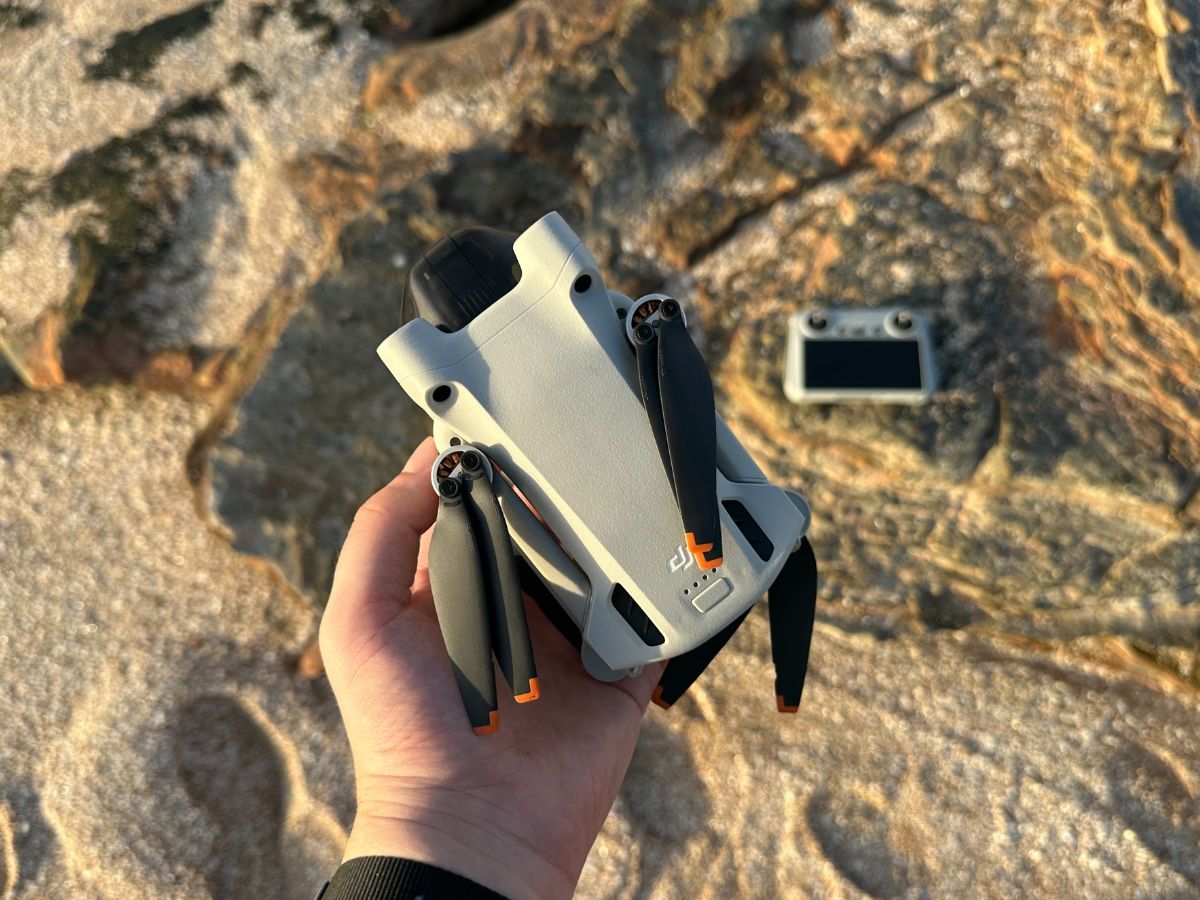
How Does the DJI Mini 3 Pro Feel in Hand?
Drone
When it comes to the design of the DJI Mini 3 Pro, those with a keen eye will immediately notice the obstacle proximity sensors that have been built into the chassis of the device – two facing forward, two back, and two facing down. They’re not the most attractive addition to the body of the drone, but I’m not going to argue with their function in preventing crashes. The blades are longer and more aerodynamic compared to the cheaper DJI Mini 2 drone and they’re replaceable with a screwdriver.
At the front of the drone sits the gimble that’s mounted to both sides of the airframe. On that gimble is the camera and its 12.1MP 1/1.3-inch sensor. Content creators will LOVE the fact the camera can be rotated 90 degrees through the DJI Fly app to shoot stills and video in either portrait or landscape format. I’ve mapped this to one of the buttons on the back of the controller for ease of use.
Overall, I much prefer the curvy look of the Mini 3 Pro over its brother the Mini 2, but both feel the same in terms of quality and materials. Hard plastics are used throughout and the familiar grey DJI colour returns to the Mini 3 Pro. With a weight that’s under 250g – meaning no need for registration – it’s hardly the sturdiest drone on the market in hand but I didn’t have an issue the one time I flew it straight into a tree.
Update 14/01/2023: In the time since first publishing this review (July, 2022) I’ve continued to use the DJI drone on a bi-weekly basis for most of the social content on our Instagram. It’s held up to everything from sand to trees, dust, dirt, and banging around in the back of a Ford Everest for a full day offroad. The controller is the same story, with zero durability issues.
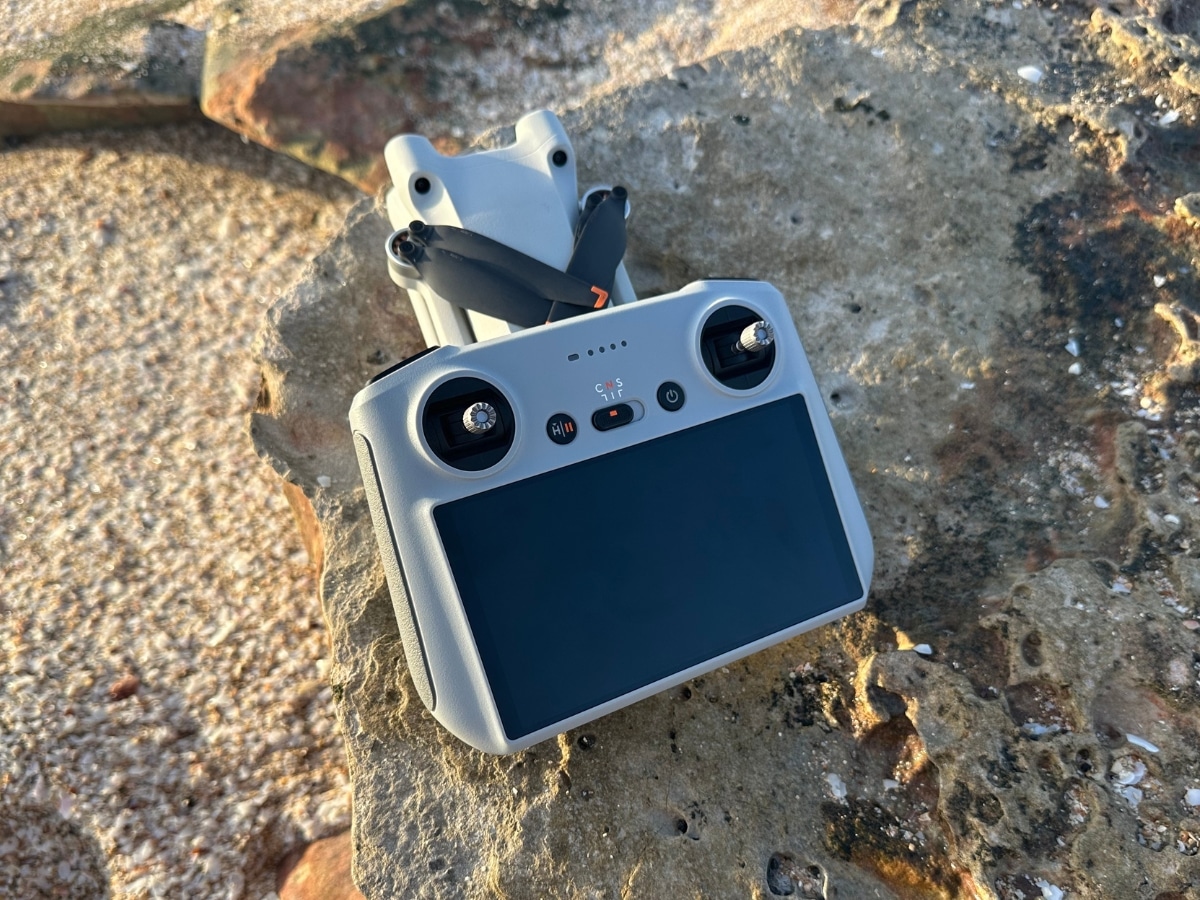
Controller
I tested the DJI Mini 3 Pro with the new DJI RC Controller, but for those who are looking to save almost $200 AUD, you can option the basic DJI RC-N1 Controller that comes with the Mavic 3, Air 2S, Mavic Air 2 and Mini 2. This controller is basically a couple of joysticks, buttons, a telescopic phone holder and no screen.
As mentioned, I highly recommend purchasing the Mini 3 Pro with the RC Controller. This comes with an impressive 5.5-inch touchscreen boasting 700-nit brightness (no issues in the sun). I can’t imagine going back to a mobile phone-mounted controller again after using this controller, and with a weight of 390g, it’s about the same as an RC-N1 Controller + smartphone. Most importantly, the controller can be flattened down for travel by simply unscrewing the thumbsticks and pressing them into slots on the back of the RC Controller.
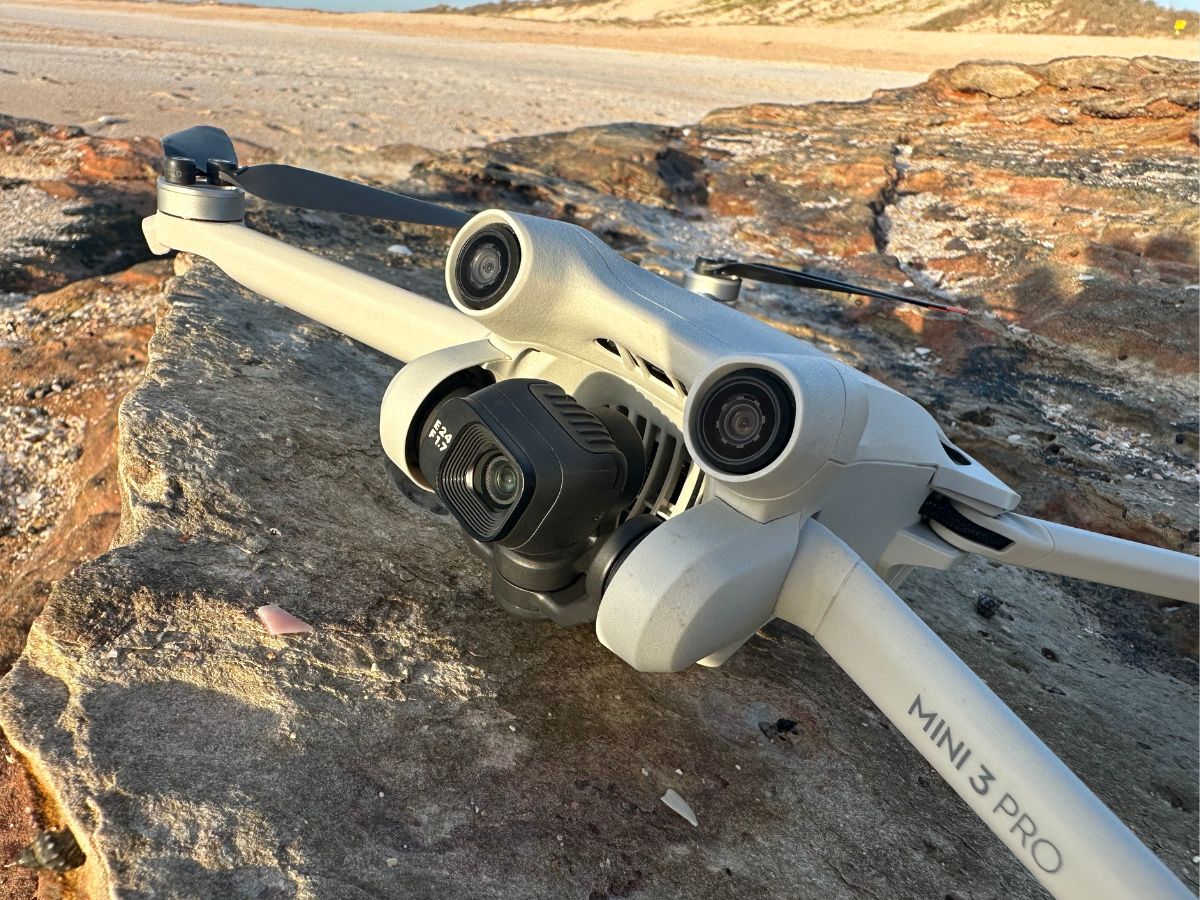
DJI Mini 3 Pro Flying
DJI Mini 3 Pro Battery Life
Just like electric cars, battery life (and tech) is evolving to allow drone fans some serious flight time. In the case of the DJI Mini 3 Pro, we found the new 2,453mAh Intelligent Flight Battery would allow around 20 minutes of quality flight time (claimed 34 minutes). Of course, if you’re flying in windy conditions, speeding around in Sport mode, or flying up and down the Y-axis a bunch this time will come down dramatically. The claimed weight of just 80.5g is accurate and complements the portable nature of the drone.
What’s the Obstacle Avoidance Like?
The obstacle avoidance built into the DJI Mini 3 Pro is great for beginners. It’s virtually impossible to crash the drone when they’re turned on, but be careful as some modes require obstacle avoidance to be turned off. Professionals refer to the system as ‘tri-directional- which means wide-angle forward, backward, and downward-facing sensors. They work incredibly well and saved us from damaging the drone on multiple occasions – they’re sensitive enough to pick up the smallest of branches, rocks, and even some powerlines.
Flying Features of the DJI Mini 3 Pro
Those who’ve come across a DJI drone in the past will notice the Mini 3 Pro offers three modes – Cine, Normal and Sport. I like to think of those as a sort of “throttle controller” and found myself learning how to fly the drone on normal mode before transitioning to the ‘Cine’ mode – that’s slower – when trying to shoot in portrait mode for Instagram. On the other hand, I hardly found myself using ‘Sport’ mode, but I did find it useful when chasing cars to shoot and in windy environments.
The following top speeds are achieved in these flying modes;
- Cine mode has a top speed of 13.4mph – all controls slow down for smoother shots.
- Normal mode has a top speed of 22.3mph.
- Sport mode has a top speed of 35.7mph – crash avoidance turns off.
The brand only recommends flying in low wind-speed scenarios when learning, but the Mini 3 Pro has a maximum wind speed resistance of around 23mph. It will alert you through the app if it’s struggling.
Experience With DJI Mini 3 Pro Flying Modes
This was my first experience flying a drone, but I have quite a bit of experience with racing remote-controlled cars so the controls were quite familiar. I’d be comfortable saying the average person could hop straight into the app and fly the drone within line of sight but practice is needed to film with the drone semi-professionally.
That being said, I found the flying modes below helped greatly in achieving my goal of smooth, professional-looking shots, and they take a lot of the skill out of having to perfectly track a subject.
FocusTrack Suite
- Spotlight 2.0 keeps the subject in frame while you fly manually.
- Point of Interest 3.0 circles the subject in a set flight radius and speed.
- ActiveTrack 4.0 follows the subject in two selectable ways:
- Trace: The aircraft tracks the subject at a constant distance.
- Parallel: The aircraft tracks the subject while flying beside it at a constant angle and distance.
QuickShots is the program I used the most for content creation.
- Dronie: The aircraft flies back and up with the camera locked on the subject (video above).
- Helix: The drone flies up and spirals around the subject.
- Rocket: The aircraft flies up with the camera facing down.
- Circle: The drone circles around the subject.
- Boomerang: The aircraft flies around the subject in an oval path, ascending as it flies away and descending as it returns.
- Asteroid: The drone creates a shot that begins as a sphere panorama high above the subject and ends with a normal shot hovering near the subject.
I was most excited to try out the MasterShots mode – which keeps the subject in the centre of the frame while executing different maneuvers in sequence to generate a short cinematic video – but in reality, you’d need the subject to be in a really big open area for this one to work perfectly as the shot is stopped as soon as the drone detects an obstacle. Some of the modes listed above also turn off obstacle detection, but they can be manually overridden if there’s a chance of a crash.
DJI Mini 3 Pro Video Quality
Video quality is where the DJI Mini 3 Pro stands out from drones at this weight and price point.
Thanks to a 12.1MP 1/1.3-inch sensor, video can be captured at three resolutions;
- 4K @ 60fps, 2x digital zoom.
- 2.7K @ 60fps, 3x digital zoom.
- FHD @ 120fps, 4x digital zoom.
The maximum video bitrate is 150Mbps, and for those looking to touch up video professionally, you can now shoot in D-Cinelike 10-bit colour. I shot the video of the BMW M4 Convertible above without an ND filter (none available at the time) in 1080p/60fps (D-Cinelike) and applied auto Lumetri Color correction in Adobe Premiere.
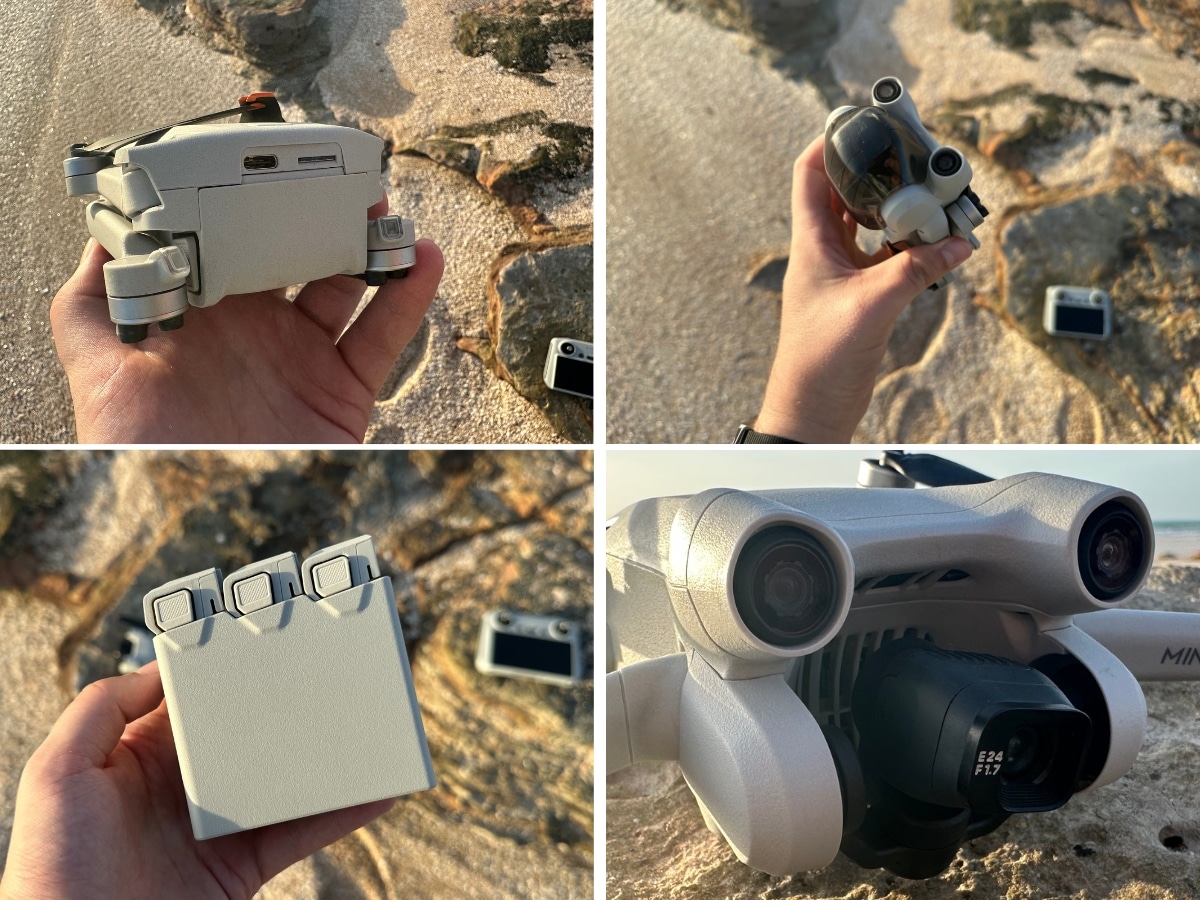
Should You Buy the DJI Mini 3 Pro?
I’ve had an absolute ball with the DJI Mini 3 Pro and it’s a lock for our year-end ‘best products of the year’ list. As a beginner in the world of drones, I love the way the drone can mould to your own individual skill level while giving you everything you’d want/ expect in terms of picture quality and support. There’s plenty of technology and capability built into the hardware and software that will allow us to better utilise the drone the more we practice, encouraging us to use it at every chance we get.
If you’ve ever wondered if the technology is ‘there yet’ with drones, the DJI Mini 3 Pro answers with a resounding YES. Now is the best time to get into the world of drones, and we’re glad we live in it!
This is my list of essential accessories for the DJI Mini 3 Pro;
- Intelligent Flight Battery for a maximum flight time of 34 mins.
- Two-Way Charging Hub charges Mini 3 Pro Intelligent Flight Batteries in sequence.
- ND Filters Set (ND 16/64/256).
- Propellers, an essential in our eyes.
- 30W USB-C Charger charger, 0-100% in just 64 minutes and an Intelligent Flight Battery Plus in 101 minutes.
Most of these accessories can be found in the DJI Fly More Plus kit, something we’d recommend from a value-for-money perspective.
You’ll also like:
Sony Linkbuds Review: What On Earth Are They?
Fujifilm X-E4 Review: Big Things Come in Small Packages
Amazon Echo Show 15 Review: Bigger Means Better?
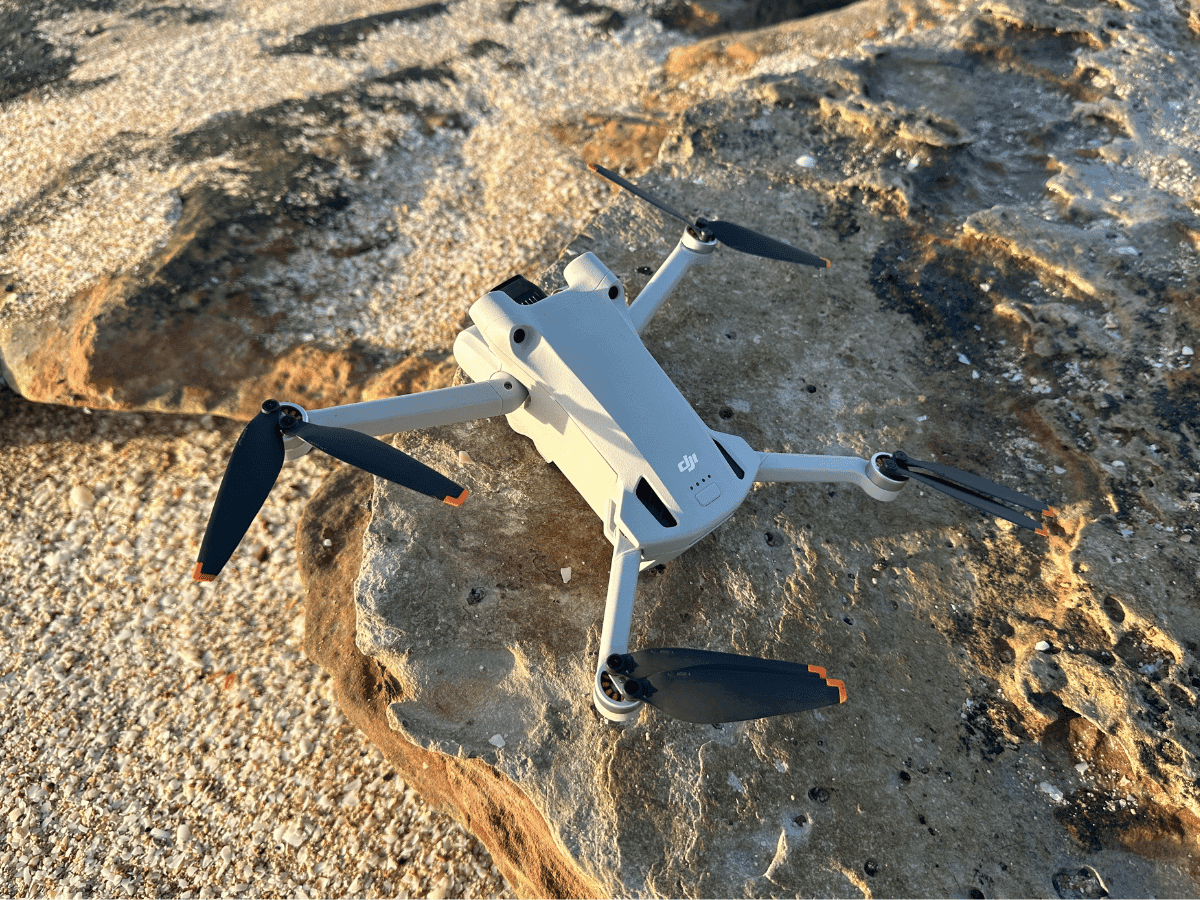

























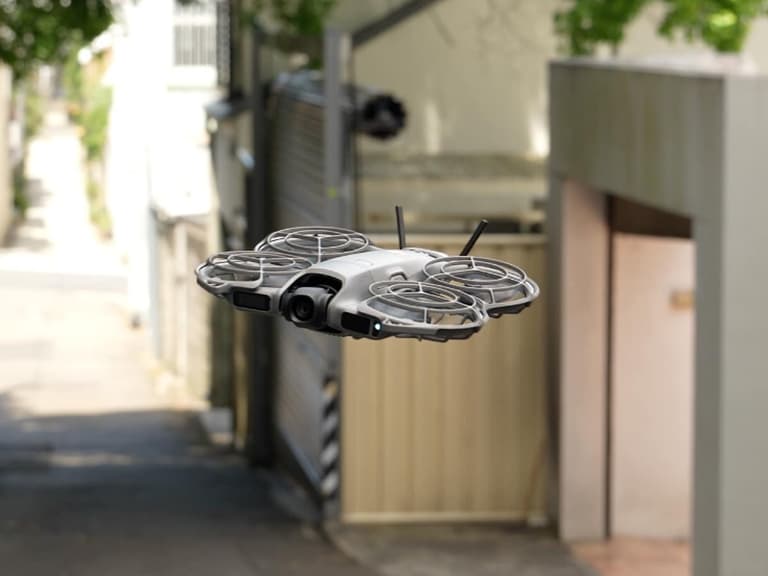
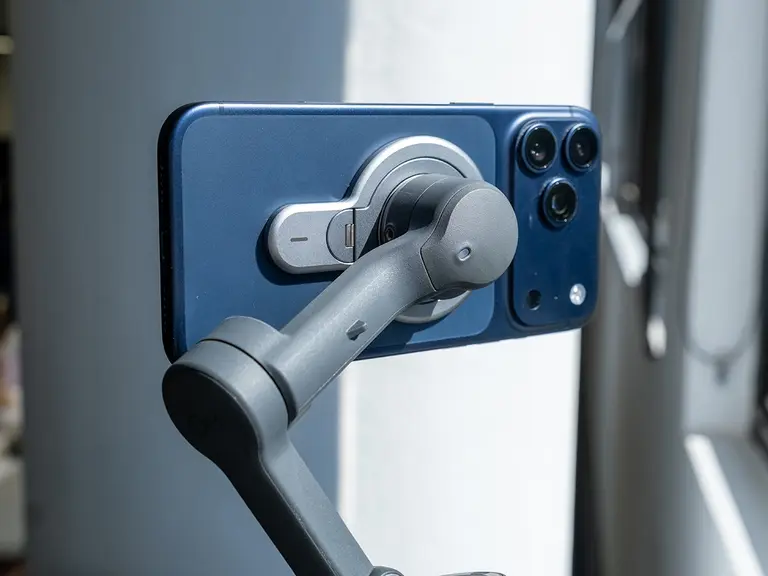



Comments
We love hearing from you. or to leave a comment.